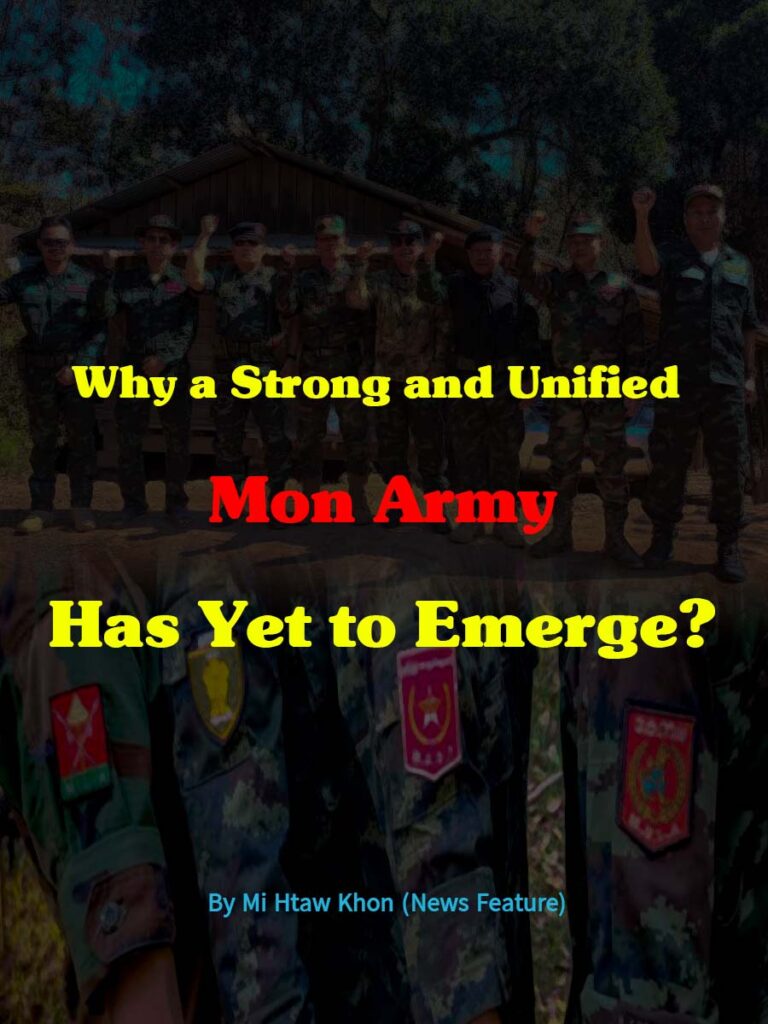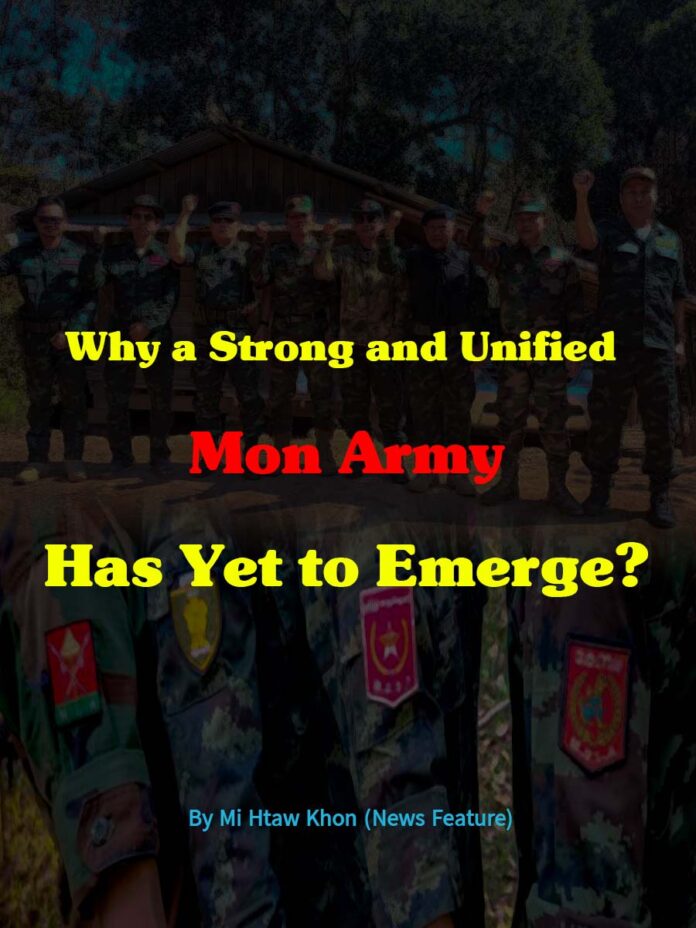By Mi Htaw Khon (News Feature)
Following the 2021 military coup in Myanmar, numerous Mon resistance forces emerged with the shared aim of toppling the military regime at its root. Despite these developments, a single, powerful, and cohesive Mon army has yet to materialize.
Several armed Mon revolutionary groups have been formed in the post-coup period, including the Mon State Defense Force (MSDF), the Mon State Revolutionary Force (MSRF), and the Ramanya Mon Army (RMA)—a coalition that includes the Mon National Liberation Army – AD (MNLA-AD) and the Mon Liberation Army (MLA).
However, these resistance groups continue to follow different paths and prioritize their own agendas, goals, and perspectives. A Mon civilian who closely monitors military affairs explained that these differences have made it difficult to unify them into a single force.

“From what I see, the Mon revolutionary landscape is split,” the source said. “There are mainly two directions: one group is fighting solely for Mon ethnic rights and independence, while the other is aligned with the NUG [National Unity Government] and engages in the wider anti-junta struggle. Uniting these paths under current conditions is challenging. Although they sometimes collaborate during operations and coordinate on conflicts, full unification remains elusive.”
Efforts to form one unified Mon army have been driven by both military necessities and public pressure from the Mon community. Yet, due to diverging strategies and visions, this goal remains unachieved.
The Independent Mon News Agency (IMNA) contacted NMSP-AD spokesperson Nai Kaung Sar to ask about progress toward unification but received no response.
Even without a formal unified army, Mon resistance groups have been actively engaging in joint military operations alongside allied ethnic armed forces, attacking junta camps, battalions, and checkpoints.
Observers say political and military collaboration between the various Mon armed groups is crucial to forming a powerful force like other major ethnic armies. Transparency and trust are especially vital.
Mi Tala Nyan, spokesperson for the Mon State Revolutionary Force (MSRF), said, “Creating one Mon army is as much a political issue as a military one. On the military side, we are cooperating with allied forces and conducting joint operations. We’re also working to improve our combat capabilities. However, the most important foundation is trust among the forces. Only with that trust can we unify.”
As a first step toward unity, the four major Mon armed groups established the “Ramanya Joint Military Command” on January 19, 2025. Later, on May 24, only two—MNLA-AD and MLA—merged to form the Ramanya Mon Army (RMA).
This merger and joint command were initially welcomed by Mon communities both at home and abroad, who hoped for a stronger, more coordinated military front against the junta.
However, the Ramanya Joint Military Command only conducted two joint offensives within Mon State before its activities were suspended in late June. Consequently, the joint force’s initial goals, including intensifying military campaigns across Mon State, fell short. This raised further questions about why a strong, unified Mon army has yet to form.
A Mon youth reflected on the deeper structural and political obstacles: “One issue is the different organizational models. Some groups want all others to dissolve and fall under one command. Others prefer a joint leadership structure where all parties share control. These differences create tension. Secondly, the lack of mutual trust and unity among the groups remains a serious barrier. Even though the public is pushing for a unified Mon army, collaboration and trust between the forces are still weak.”
He added that for any unified Mon army to succeed, clear short- and long-term political and military frameworks, including transparent power-sharing agreements, must also be communicated to both the troops and the Mon public.
Ultimately, the path to a strong and united Mon army depends on continued trust-building among the Mon resistance groups and a shared commitment to common goals.

